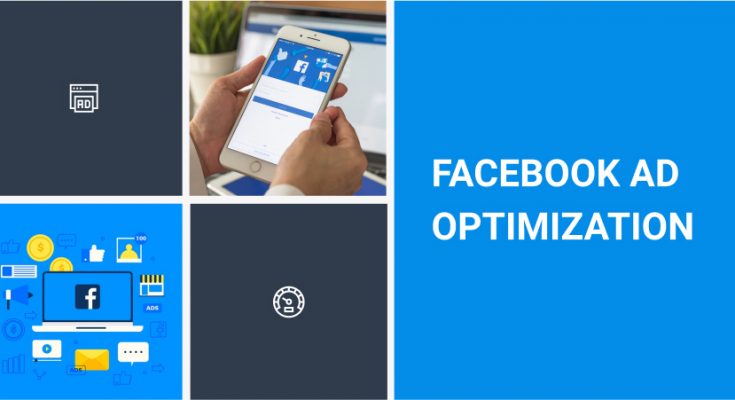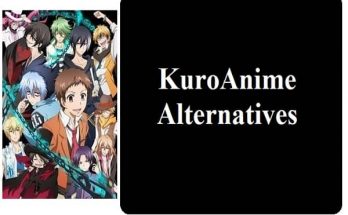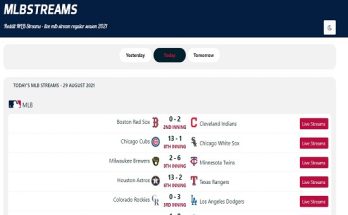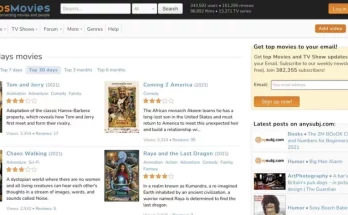There are several articles about Facebook ad optimization. However, the majority of them include simple recommendations such as “Install a Facebook Pixel” or “Create a Facebook audience.” The term “optimization” indicates that your campaign’s results will increase as a consequence.
It distinguishes the successful unicorn ad campaigns from the others. This post will discuss Facebook ad optimization tricks that can assist you in taking your campaign to the next level.
This guide will teach you how to:
- Increase the click-through rates on your ads (CTR).
- Reduce the cost-per-click of your ad campaign (CPC).
- Reach out to even more high-return audiences.
- Reduce your cost-per-acquisition (CPA).
- Increase your sales without raising your ad expenditure.
If you want to outperform your competitors and reach all of your target audience members, you must optimise your ads both before and after they are published on Facebook. The good news is that your time and work will be well spent. So, what exactly are these 12 effective Facebook ad optimization tricks I’m referring to? See Top 20 Translation Services & Websites of 2022 – tendingtech.
Continue reading to find out!
#1. Increase the number of people who like and share your Facebook ads
Likes and shares on your Facebook posts (and advertisements) are pure social evidence. If other people appreciate the ad, it must be a good product. When creating a Facebook ad optimization, you have two options, the default of which is to produce fresh advertisements for each ad package and campaign.
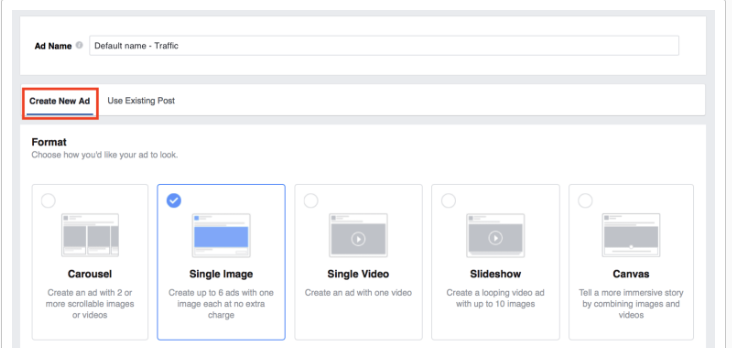
The “Use Existing Post” option is frequently overlooked. It is, nevertheless, a very efficient method of maximising your advertising likes and shares. The “Use Existing Post” option allows you to combine all of the campaigns’ post engagements into a single ad.
If you’ve ever wondered how certain advertisers get hundreds or thousands of likes on their Facebook advertisements, it’s likely that they’re employing the same optimization technique.
The simplest approach to creating numerous ad campaigns from the same promotional post is to first publish it on your company’s Facebook Page. You may then choose this article whenever you create new ad campaigns or A/B test variants.
#2. Use the FTO (fast take-off) method
It may take a few days before you have enough marketing results to begin optimising. A campaign launch might take some time, especially when operating with a minimal budget:
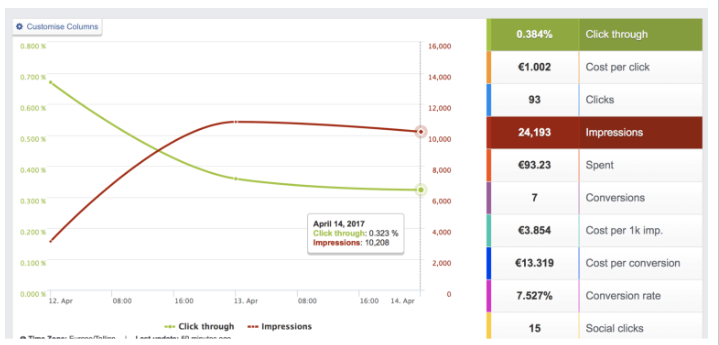
That’s why I prefer to use the fast takeoff (or FTO) method to speed up the optimization process.
The FTO technique works as follows:
- Assign daily or lifetime budgets that exceed your estimated budget when establishing a new campaign.
- You don’t want to employ Accelerated Delivery since Facebook will prioritise ad delivery speed over quality and cost.
- After your ads have received 10,000 or more impressions, you may assess what is working and what needs to be improved.
- After the initial campaign launch, you can reduce your budget to meet your overall budget.
However, bear in mind that after each new modification, you must give Facebook at least 24 hours to modify the effectiveness of your advertising. Consider waiting at least 24 hours after making significant modifications to your campaigns before drawing any conclusions.
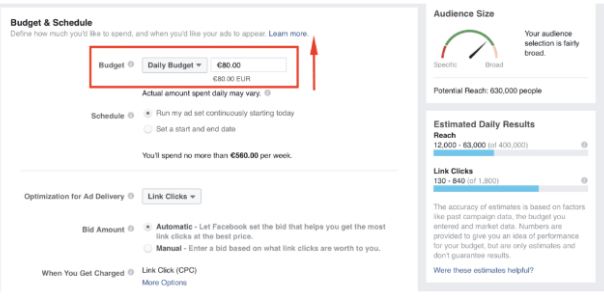
#3. Optimize your ad scheduling
Are your Facebook advertisements operating around the clock, reaching out to your target audience regardless of the hour or day of the week? Analyzing your Facebook ad accounts is a key component of Facebook ad optimization. And I’ve discovered that some days and hours always exceed the rest.
Go to your Facebook Ads Manager reports and use the Breakdown tab to break down your campaigns by day to determine which weekdays generate the most conversions at the lowest CPA.
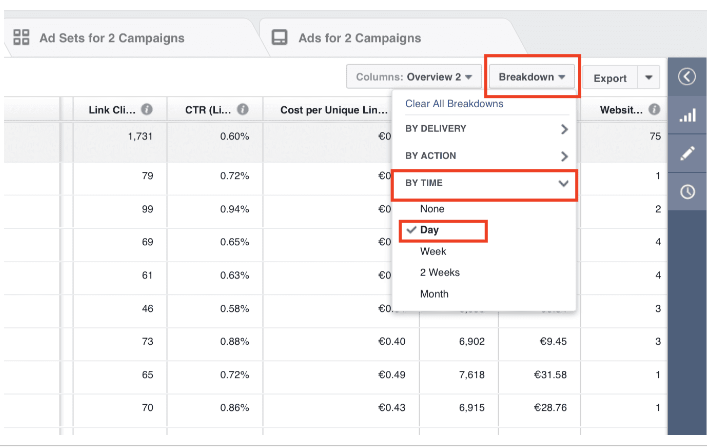
You can determine the optimal time for advertising by analysing the performance data from various Facebook ads. Next, you may plan your campaigns so that they only reach your prospects when they are most likely to respond. The audience inspection feature in AdEspresso helps you identify the best-performing time of day for your advertisements.
This data enables you to easily discover which hours of the day (in either the impression time zone or your ad account time zone) are doing the best based on the KPI that is most relevant to you.
You can then use this data to create a dayparting plan for your campaigns, ensuring that they only run during the most active hours of the day. Another incentive to run your ad campaigns on a bespoke schedule is to reduce ad frequency—consumers will see your ads less frequently and will not become tired of them as soon.
AdEspresso allows you to define unique optimization rules that might serve as a “frequency cap” for all of your campaigns!
#4. Use ad rotation to combat ad weariness.
AdEspresso investigated the impact of ad frequency on the CTR and CPC of Facebook ad optimization campaigns. Here’s what they discovered:
The more people who see your advertisements, the more bored they will become.
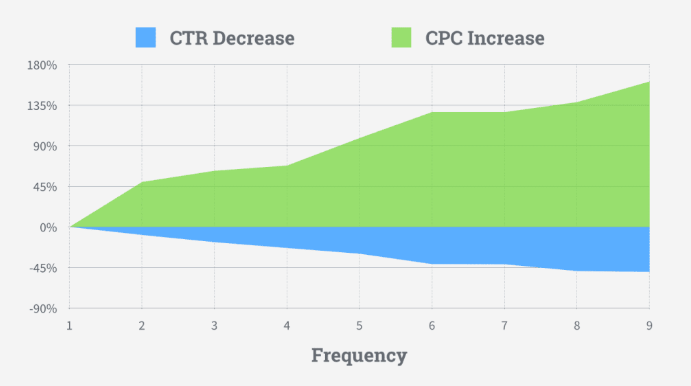
This implies that when your target demographic has viewed your Facebook ad four or more times, the CPC will skyrocket. As such, how can you improve your Facebook ad optimization campaign so that consumers don’t become weary of seeing your ads?
Here’s a quick Facebook ad optimization tip for avoiding ad fatigue:
- Create multiple ad versions using various Facebook ad styles.
- Create an ad campaign with various ad sets and different advertisements, then configure each ad set to run on a different weekday.
People will see a different ad every day, and your advertising will not appear repetitive. This optimization technique is particularly useful when conducting advertisements with tiny audiences, such as remarketing campaigns. In such instances, consumers may view your advertising several times each day, so you should take special care not to repeat a single ad creative.
#5. Boost your ad position
When advertising on Facebook, the location of your ad has a significant influence on your advertising expenditures. So much so that, according to AdEspresso statistics, the CPC can vary by more than 550% depending on ad placement. Log in to Facebook Ads Manager and utilise the Breakdown menu to sort your campaigns by placement to find your top-performing ad placements.
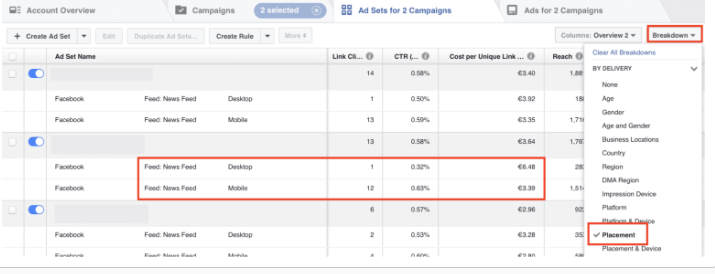
Once you’ve identified your top-performing ad spots, optimise your campaigns accordingly.
- Increase your bidding on the most profitable ad spots.
- If an ad placement falls short of your expectations, just delete it from your ad collection.
#6. Always perform A/B testing on your concepts.
Finding out what works is an important component of Facebook ad optimization. And what better way to discover new high-performing ad creatives, messaging, or audiences than to run a quick Facebook A/B test? AdEspresso, for example, evaluates new ad styles on a regular basis.
However, not everything should be A/B tested. When looking for Facebook ad A/B testing ideas, consider which ad element will have the most impact on CTR and conversion rate.
I propose that you begin by testing:
- Ad design
- The ad copy, particularly the headline,
- An offer of exceptional value
- Ad placements
- Buttons for completing tasks
- Methods of bidding
- The objectives of the campaign
#7. Put highly distinguishable variants to the test.
Many Facebook advertisers make the error of trying too many ad components at the same time. Before drawing any inferences from your trial findings, you must gather at least 100 conversions (i.e., clicks or leads) for each variant. Even better if you can wait until each variety has 300 or 500 conversions. Waiting for so long might be quite unpleasant when dealing with a limited advertising budget.
Use the following algorithm to identify new compelling ad pieces faster:
- First, test 2-3 significantly distinct variants to see which overall concept works best.
- In the next Facebook A/B test, take the winning ad from the previous test and build on its variants.
You save the time and money that would have been spent A/B testing various variants of all your initial ideas this way.
#8. Choose the most appropriate campaign goal
The first choice you’ll have to make when creating a new Facebook ad optimization campaign is the aim.
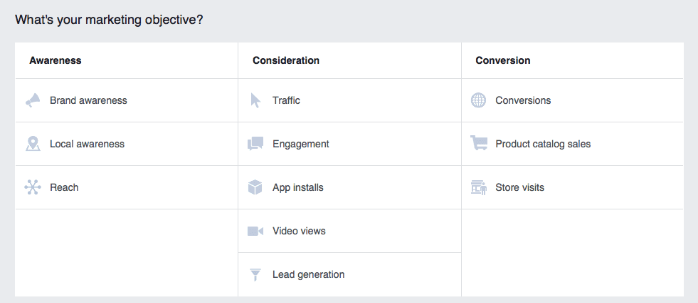
The campaign aim informs Facebook about the final purpose of your advertising campaign and assists its algorithms in optimising ad distribution for the best outcomes. In essence, you’re instructing Facebook on how to optimise your ad campaign automatically.
Choosing the proper Facebook advertising target during the campaign setup process is crucial since it will impact the delivery and cost-per-result of your advertisements.
But how can you determine which of the 10+ campaign objectives to choose? Always select a campaign goal that corresponds to your advertising objectives.
Select the “Conversions” target, for example, if you want new trial signups. Alternatively, if you want to raise brand awareness in a specific place, use the “Local awareness” target. This way, Facebook will know how to maximise the reach and ad delivery of your campaign.
#9. Remove the word “converted” from your target audience.
Optimizing your Facebook and Instagram targeting is another approach to increasing the reach of your campaign without breaking the bank.
It makes no sense to keep showing the same advertisements to someone who has previously taken advantage of the deal. These leads should be advanced through your marketing funnel and targeted with fresh communications. For example, if you’re offering a free eBook and someone downloads it, you shouldn’t waste more ad money showing your ad to them again.
Instead, you may want to build a Facebook Custom Audience of the converted and exclude them from the audience of your campaign. To eliminate previous conversions from your Facebook audience, do the following:

- Make a Custom Audience out of folks who have visited specified websites (e.g. your thank you page or a blog article).
- Use the EXCLUDE function when creating your ad campaign to avoid targeting users who have previously converted on this offer.
#10. Set up auto-optimization rules
Did you know that you can use Facebook Ads Manager to create automatic optimization rules? This function is known as Facebook Automated Rules. And it’s free for everyone who advertises on Facebook.
If the rule criteria are met, four things can happen automatically:
- Turn your campaign, ad set, or ad off.
- Send an alert to the ad manager.
- Budget modification (increase/decrease daily/lifetime budget by…).
- Bid adjustment by hand (increase/decrease bid by…)
And, while Facebook is busy tweaking your advertisements depending on your preset settings,
… you could shift your focus to developing new campaign ideas. Set up Facebook auto-optimization rules as follows:
- Navigate to the Facebook Ads Manager.
- Choose one or more campaigns, ad sets, or ads.
- In the right-hand menu, select “Edit.”
- Select the “Create Rule” option.
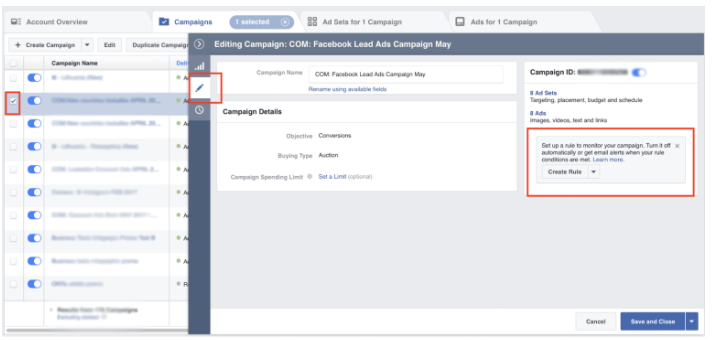
- Configure the conditions of your automated rule.
For example, you might instruct Facebook to halt every ad that receives 5 ad views. Alternatively, drop your price on ad sets with a high cost-per-result. I also propose that you set up an email notification to obtain a summary of the previous 24 hours’ automatic updates to your campaigns.
#11. Employ geo-targeting
If you own a physical store, you should absolutely take advantage of Facebook’s geo-targeting possibilities. Geo-targeting allows you to show advertisements to people who live in a certain geographical location. This may produce excellent results since the more relevant your ads are to your target demographic, the more likely they are to convert.
If you currently use Facebook local awareness advertisements, you are aware that geo-targeting works by allowing you to target viewers in specific places.
You may target advertisements depending on
- Country
- State
- Province
- City
- The District of Congress
- Radius
- postal code or zip code.
What you may not realise is that geo-targeting may be used to attract high-value consumers.
High-value consumers may be a benefit to your business, whether you’re a cake store aiming to sell your cakes to high-end private parties or a stationery shop looking to portray itself as a premium brand. The best thing is that you won’t have to increase your ad expenditure.
Let’s have a look at how everything works. To begin, create a new ad and set it to target a certain geographic region.
In this example, we utilised the Drop Pin option and set the radius to one mile. Assume we’re a real estate firm wanting to get into the Manhattan real estate market, and our target demographic is first-time home sellers.
As you can see, this will show our ad to 710,000 people—most of whom will be irrelevant. So, how do you cut them down? Here are four options.
#1. Demographic and behavioural targeting
We focus on those who are “likely to relocate” according to Facebook statistics to restrict the target for our real estate firm. We also narrow the age range to remove people who are too young to be thinking about selling their houses.
Finally, we established an income range and a net worth objective. However, we left a broad range to see which group our ad performs best with. This reduces our target audience to a lot more manageable 2,800 people, which is wonderful for your Facebook marketing budget optimization.
#2. Geographic exclusion criteria
Assume we decide to divide Manhattan into areas and allocate one to each team member. Each realtor is in charge of Facebook ad optimization in their area. In this instance, excluding regions by zip code is a suitable option. You may also omit several zip codes, if you reduce your target demographic too much, Facebook will not be able to run your ad.
#3. Geographic behaviour targeting
Of course, people who are in the same location are there for various reasons. Some reside there, while others visit or have recently gone through-whatever group you target depends on what you’re offering.
Fortunately, Facebook provides you with the opportunity to select, so that your advertisements are shown to the most relevant individuals.
#4. Targeting by a custom list
If you know where your ideal clients live, another option is to use custom lists to reach out to them. You can, for example, target numerous zip codes based on your targeting parameters. That might be the zip code with the lowest property prices in the country for our real estate company. We may target potential high-value clients in different parts of the country using this information.
#12. Be inventive.
I know you already know this, but it needs repeating. Even with all of the fantastic optimization tactics I just demonstrated, you still need to stand out in the noisy world of Facebook advertisements. This is why. People see an interesting ad before they know what it’s about, and then they read the copy. It pays to be inventive. It is beneficial to think beyond the box.
Let’s take a look at a successful Facebook ad optimization from Promo by Slidely to see how well creativity pays. Promo is a B2B firm that specialises in video marketing, so it’s only natural that they choose a video for their ad campaign. What makes it fantastic is that they picked a sweet little kid dancing instead of the slick, professional approach you might expect from a B2B corporation.
Not only is he adorable, but small business owners may find his erroneous dancing to be an allegory for how operating a small business might seem. Most importantly, it makes us chuckle while also appealing to the audience’s pain spots and providing answers, making us want to learn more. The statistics speak for themselves in terms of engagement: 2.2 million views, 4.2 thousand responses, five hundred comments, and five hundred shares.
Conclusion
Facebook ad optimization is a never-ending cycle of trial and error. While it is not a simple procedure, it is well worth the time and effort because Facebook advertisements are still one of the most effective methods to attract new clients.
Facebook accounts for 80.4% of social referrals to e-commerce and other retail sites, and the typical Facebook user clicks on 11 ads every month. Using the Facebook ad optimization tricks mentioned in this post can help you increase the effectiveness of your advertising without spending more.
